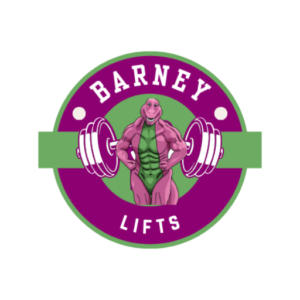Creating a workout plan tailored to your specific fitness goals is crucial for achieving success in your fitness journey. A well-structured plan provides direction, keeps you motivated, and helps you track your progress. Whether your goal is to build muscle, lose weight, improve endurance, or enhance overall fitness, designing an effective workout plan involves several key steps.
1. Define Your Goals
The first step in designing an effective workout plan is to clearly define your fitness goals. Are you aiming to lose weight, gain muscle, increase strength, improve cardiovascular health, or enhance flexibility? Your goals will determine the type of exercises, intensity, frequency, and duration of your workouts. Having specific, measurable, attainable, relevant, and time-bound (SMART) goals will help you stay focused and motivated.
2. Assess Your Current Fitness Level
Before starting a new workout plan, it’s important to assess your current fitness level. This assessment can include measuring your body composition, strength, endurance, flexibility, and cardiovascular fitness. Understanding your starting point will help you create a plan that is appropriate for your fitness level and prevent injury.
3. Choose the Right Type of Exercise
Different fitness goals require different types of exercises. Here are some examples based on common fitness goals:
- Muscle Building: Focus on resistance training exercises such as weightlifting, bodyweight exercises, and resistance band workouts. Compound movements like squats, deadlifts, bench presses, and pull-ups are particularly effective for building muscle.
- Weight Loss: Combine cardiovascular exercises like running, cycling, and swimming with high-intensity interval training (HIIT) and strength training. This combination helps burn calories and build lean muscle mass.
- Endurance Improvement: Engage in cardiovascular activities such as running, cycling, swimming, or rowing. Gradually increase the duration and intensity of your workouts to build endurance.
- Flexibility Enhancement: Incorporate stretching, yoga, and Pilates into your routine to improve flexibility and reduce the risk of injury.
4. Determine Exercise Frequency
The frequency of your workouts depends on your fitness goals, schedule, and recovery needs. Here are some general guidelines:
- Muscle Building: Aim for 3-5 strength training sessions per week, allowing at least 48 hours of rest between workouts targeting the same muscle group.
- Weight Loss: Engage in at least 150 minutes of moderate-intensity or 75 minutes of high-intensity cardiovascular exercise per week, combined with 2-3 strength training sessions.
- Endurance Improvement: Perform cardiovascular exercises 3-5 times per week, gradually increasing the duration and intensity.
– **Flexibility Enhancement:** Incorporate stretching or yoga sessions 2-3 times per week.
5. Structure Your Workouts
An effective workout plan should include a warm-up, main workout, and cool-down. Here’s a basic structure:
- Warm-Up: Spend 5-10 minutes doing light aerobic exercises (e.g., walking, jogging) and dynamic stretches to prepare your muscles and joints for the workout.
- Main Workout: This is the core of your workout plan and should be tailored to your fitness goals. Include a variety of exercises that target different muscle groups and keep your workouts challenging and engaging.
- Cool-Down: Finish with 5-10 minutes of light aerobic activity and static stretching to promote recovery and flexibility.
6. Monitor Progress and Adjust
Tracking your progress is essential to ensure that your workout plan is effective and that you’re moving towards your goals. Keep a workout journal or use a fitness app to record your exercises, sets, reps, weights, and how you feel during and after workouts. Regularly review your progress and make necessary adjustments to your plan.
7. Incorporate Rest and Recovery
Rest and recovery are crucial components of any effective workout plan. Overtraining can lead to burnout, injuries, and hindered progress. Ensure that you include rest days in your plan and listen to your body. Adequate sleep, hydration, and nutrition also play a vital role in recovery and overall performance.
8. Stay Consistent and Motivated
Consistency is key to achieving your fitness goals. Find ways to stay motivated, such as setting short-term goals, rewarding yourself for milestones, and varying your workouts to keep them interesting. Working out with a friend or joining a fitness community can also provide support and accountability.
9. Seek Professional Guidance
If you’re new to exercise or have specific fitness goals, consider seeking guidance from a fitness professional. A certified personal trainer can help you design a customized workout plan, ensure you’re using the proper form, and provide motivation and support.
Conclusion
Designing an effective workout plan requires careful consideration of your fitness goals, current fitness level, and personal preferences. By following these steps and staying committed, you can create a plan that not only helps you achieve your goals but also makes your fitness journey enjoyable and sustainable. Remember, the most important aspect of any workout plan is consistency and making it a part of your lifestyle.




